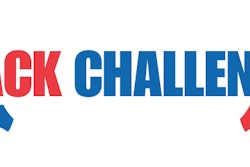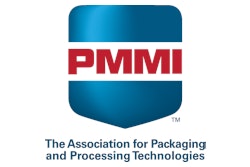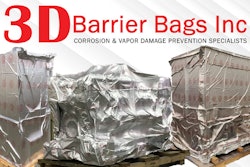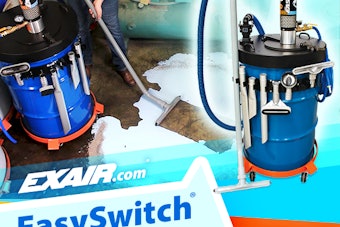Welcome to Package This, where today we will hone in on the remarkable world of marking and coding equipment. Found in nearly every packaging facility, these machines are essential for printing and marking variable data like expiration dates, product codes, bar codes, and batch numbers on materials including paper, plastic, metal, and glass.
Today, we will give you an overview of the main marking and coding technologies, including:
- Small Character Inkjet
- Large Character Inkjet
- Thermal Transfer Coders
- Laser Coders
- Embossing/Debossing and
- Hot or Cold Stamping Machines
First up, let’s look at small-character inkjet systems, which use a non-contact method to propel droplets of ink onto the surface material to mark lot codes, expiration dates, and other information directly on a package at high rates.
Squid Ink’s JetStream™ continuous inkjet printing systems offers a good example of what a small character system can do. It prints high quality small characters on a variety of substrates: porous, non-porous, smooth, textured, curved, concave and other surfaces. Printing up to 5 lines of text, the JetStream is designed to offer a reliable and cost-effective solution for virtually any small character, primary product coding application.
Squid Ink’s system also features a color touchscreen interface with options to help users make their mark on a variety of products while streamlining their coding operation.
Large-character inkjet systems, like this system also from Squid Ink, can be used to produce barcodes, logos, and product descriptions when legibility and machine scan-ability of the code are top requirements, such as during shipping and palletizing. The CoPilot® Max Turbo printing system prints high-resolution characters on porous or non-porous surfaces. Because this system handles up to 2.8 inches of print height per printhead and can run up to 2 printheads from one controller, the CoPilot Max Turbo offers versatility for coding and marking applications. The system also uses Squid Ink’s active ink system, allowing users to tilt or rotate the printhead in any direction without making height adjustments to the ink supply.
Thermal transfer coding, also called thermal transfer overprint or TTO, is a direct contact method for coding flexible packaging materials like plastic film, foil, and paper. TTO applies heat to transfer an image from a ribbon to the packaging material to create high-quality bar codes, as we see in this thermal transfer system from Bell-Mark. Bell-Mark’s EasyPrint Thermal Transfer printers can print directly onto packaging materials, reaching speeds up to 800 millimeters per second with a print area up to 8.3 inches.
With thermal transfer, many types and colors of thermal ribbon are available to print on a wide range of different types of substrates, which is an advantage of systems like this Bell-Mark thermal transfer coder.
Keeping equipment clean and dry is a priority throughout the facility. Bell-Mark offers optional washdown versions that are IP67-rated for protection against harsh environments. Its hygienic design features a sealed electrical bay and watertight connections.
Next, we have Laser coding systems, a non-contact technology that uses focused beams of energy to engrave, etch, and ablate surfaces, producing precise and durable markings. Laser coders are used in similar applications as inkjet technology, for coding directly onto glass, metal, and other materials.
Embossing and debossing equipment is typically used for raising or recessing brand logos, product names, or package components on boxes, aluminum cans, and some bags. Embossing and debossing helps brands add aesthetic appeal to packages while reinforcing brand recognition and promoting customer loyalty.
Finally, hot or cold stamping machines are used for marking and decorating as well as for security applications. Hot stamping technology uses a heated die to transfer a thin layer of foil onto the material, creating a metallic foil imprint used on specialty boxes and cartons for high-end products. Cold stamping machines apply pressure to transfer a pre-printed image or hologram onto the material as a graphic enhancement or tamper-evident feature.
There are even more types of specialty coding equipment, such as reciprocating coders used in bread bagging and other applications, that we won’t have time to cover here. But one thing is for sure: coding and marking machines are vital tools for brands. They help maintain product data throughout the supply chain, ensure package and product security, and enhance package design through decoration.
We hope you enjoyed this episode! Please take a second to like and share this video with your colleagues on LinkedIn! It really helps us spread the word. Also, join us for more videos on packaging machinery and materials by subscribing to our full Package This series on YouTube.
And if you’re in the market for marking and coding equipment or other packaging machines or materials, be sure to check out PMMI ProSource, North America’s most complete packaging and processing directory with over 1,000 of the top suppliers, at prosource.org.
Thanks for watching and until our next video, keep on packaging!


















